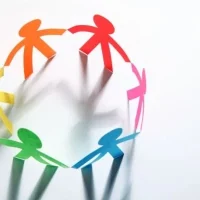In the ever-evolving landscape of nonprofit funding, donor fatigue has emerged as a significant challenge for NGOs and community organizations. This phenomenon occurs when donors become overwhelmed by the constant requests for support, leading to a decline in their willingness to contribute. The saturation of appeals, particularly in times of crisis or heightened social awareness, can desensitize even the most committed supporters.
Understanding the nuances of donor fatigue is crucial for organizations aiming to maintain and grow their funding base. It is essential to recognize that donors are not merely financial resources; they are individuals with their own motivations, interests, and limits. To combat donor fatigue, organizations must first acknowledge the emotional and psychological aspects of giving.
Donors often seek meaningful engagement and a sense of connection to the causes they support. When they feel bombarded by requests or perceive that their contributions are not making a tangible impact, their enthusiasm can wane. Therefore, it is vital for NGOs to adopt a more strategic approach to donor communication, focusing on quality over quantity.
By providing donors with compelling narratives that highlight the real-world impact of their contributions, organizations can rekindle interest and foster a deeper sense of commitment among their supporters.
Building Sustainable Relationships with Donors
Establishing sustainable relationships with donors is paramount for any nonprofit organization seeking long-term success. This process begins with effective communication that goes beyond mere solicitation. Organizations should strive to create a dialogue with their donors, allowing them to feel valued and appreciated.
Regular updates on the organization’s activities, successes, and challenges can help donors feel connected to the mission and understand how their contributions are making a difference. Personalizing communication—such as sending handwritten thank-you notes or recognizing milestones in a donor’s life—can further strengthen these relationships. Moreover, transparency plays a critical role in building trust with donors.
Organizations should be open about how funds are allocated and the impact they achieve with those resources. Providing detailed reports and success stories can help donors see the tangible results of their support, reinforcing their commitment to the cause. Additionally, involving donors in decision-making processes or inviting them to participate in events can create a sense of ownership and investment in the organization’s mission.
By fostering these sustainable relationships, NGOs can cultivate a loyal donor base that is more likely to provide ongoing support.
Diversifying Fundraising Strategies
In an increasingly competitive funding environment, diversifying fundraising strategies is essential for NGOs looking to secure financial stability. Relying solely on one or two sources of funding can leave organizations vulnerable to fluctuations in donor interest or economic conditions. By exploring a variety of fundraising avenues—such as individual donations, grants, corporate sponsorships, and events—organizations can create a more resilient financial foundation.
Each fundraising strategy has its unique advantages and challenges, and understanding these can help organizations tailor their approaches to fit their specific needs. For instance, individual giving campaigns can be enhanced through targeted outreach efforts that resonate with specific demographics. Grant applications require meticulous attention to detail and alignment with funder priorities, while corporate partnerships can offer not only financial support but also valuable resources and expertise.
Additionally, hosting fundraising events—whether virtual or in-person—can engage the community and raise awareness about the organization’s mission. By diversifying fundraising strategies, NGOs can mitigate risks associated with donor fatigue and economic downturns while maximizing their potential for growth.
Leveraging Technology for Fundraising
In today’s digital age, leveraging technology for fundraising has become an indispensable strategy for NGOs seeking to expand their reach and enhance their fundraising efforts. Online platforms provide organizations with innovative tools to connect with potential donors, streamline donation processes, and engage supporters in new ways. Social media channels, for example, allow nonprofits to share compelling stories and updates in real-time, fostering a sense of community among supporters while attracting new donors who resonate with their mission.
Moreover, technology enables organizations to implement data-driven approaches to fundraising. By utilizing analytics tools, NGOs can gain insights into donor behavior and preferences, allowing them to tailor their outreach efforts more effectively. Crowdfunding platforms have also gained popularity as a means for organizations to raise funds for specific projects or initiatives while engaging a broader audience.
By embracing technology in their fundraising strategies, nonprofits can not only increase their financial resources but also enhance their overall impact within the community.
Focusing on Impact and Transparency
In an era where accountability is paramount, focusing on impact and transparency is essential for NGOs aiming to build trust with donors and stakeholders alike. Donors want to know that their contributions are making a difference; therefore, organizations must prioritize measuring and communicating their impact effectively. This involves setting clear goals, tracking progress through metrics, and sharing success stories that illustrate the tangible outcomes of their work.
By demonstrating the real-world effects of their initiatives, nonprofits can inspire confidence in their mission and encourage continued support. Transparency extends beyond just reporting on impact; it also involves being open about challenges and setbacks. Donors appreciate honesty and are more likely to remain engaged when they understand the complexities of the work being done.
Regularly sharing financial reports and updates on organizational performance fosters a culture of accountability that resonates with supporters. By prioritizing impact and transparency, NGOs can cultivate stronger relationships with donors while reinforcing their commitment to ethical practices.
Collaborating with Corporate Partnerships
Identifying Aligned Corporate Partners
To establish successful corporate partnerships, NGOs must identify companies whose values align with their mission. By building relationships based on shared goals, NGOs can create mutually beneficial outcomes that extend beyond financial contributions. For example, companies may offer in-kind donations or pro bono services that can significantly enhance an organization’s capacity to deliver its programs effectively.
Employee Engagement and Community Involvement
Engaging employees through volunteer opportunities fosters a sense of community involvement and strengthens the bond between the corporate partner and the nonprofit organization. By leveraging these collaborations strategically, NGOs can amplify their impact while creating lasting relationships within the business sector.
A Multifaceted Approach to Fundraising
In conclusion, navigating the complexities of fundraising requires a multifaceted approach that addresses donor fatigue, builds sustainable relationships, diversifies strategies, leverages technology, emphasizes impact and transparency, and fosters corporate partnerships. By adopting these strategies, NGOs can not only secure vital funding but also create a thriving ecosystem of support that empowers them to fulfill their missions effectively.
In the context of exploring innovative fundraising strategies for African NGOs, it is beneficial to consider how similar organizations in other regions are addressing funding challenges. A related article that could provide valuable insights is titled “Applications Open for Youth and Community Grants Program – Australia.” This article discusses a grant program in Australia that supports local initiatives, which could offer useful parallels and ideas for African NGOs looking to diversify their funding sources and engage more deeply with their communities. For more details on this approach, you can read the full article here.
FAQs
What is donor fatigue?
Donor fatigue refers to the phenomenon where donors become less willing to contribute to charitable causes due to being overwhelmed by the frequency and volume of donation requests.
How are African NGOs rethinking fundraising to overcome donor fatigue?
African NGOs are rethinking fundraising by diversifying their sources of funding, focusing on building long-term relationships with donors, and implementing sustainable fundraising strategies.
What are some examples of sustainable fundraising strategies being adopted by African NGOs?
Some examples of sustainable fundraising strategies being adopted by African NGOs include investing in capacity building, leveraging technology for online fundraising, and engaging in social enterprise activities to generate income.
How can African NGOs build long-term relationships with donors?
African NGOs can build long-term relationships with donors by providing regular updates on the impact of their programs, demonstrating transparency and accountability in their use of funds, and engaging donors in meaningful ways beyond soliciting donations.
What are the benefits of diversifying funding sources for African NGOs?
Diversifying funding sources can help African NGOs reduce their reliance on a single donor or funding stream, increase their financial stability, and adapt to changes in the funding landscape.








































